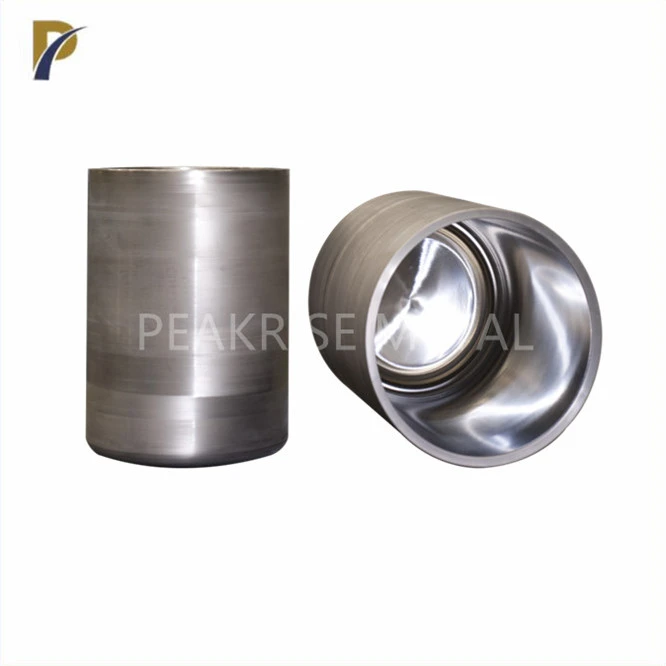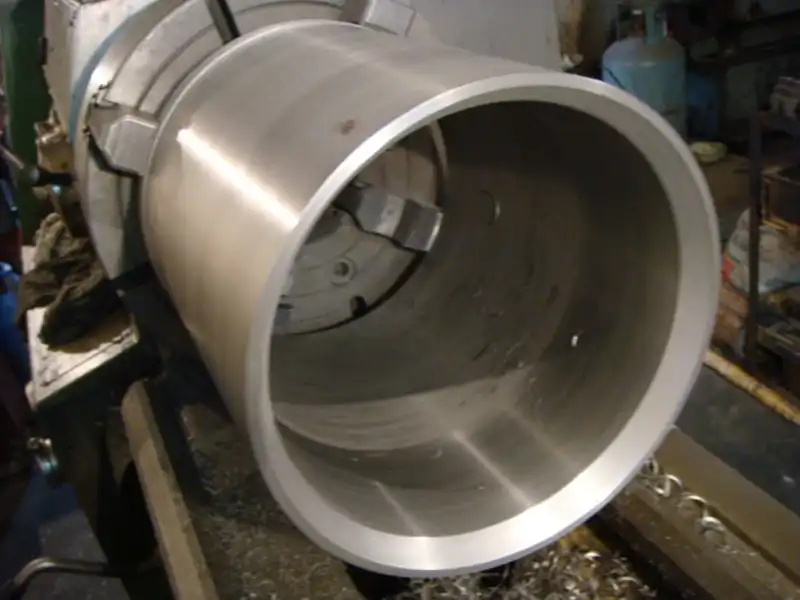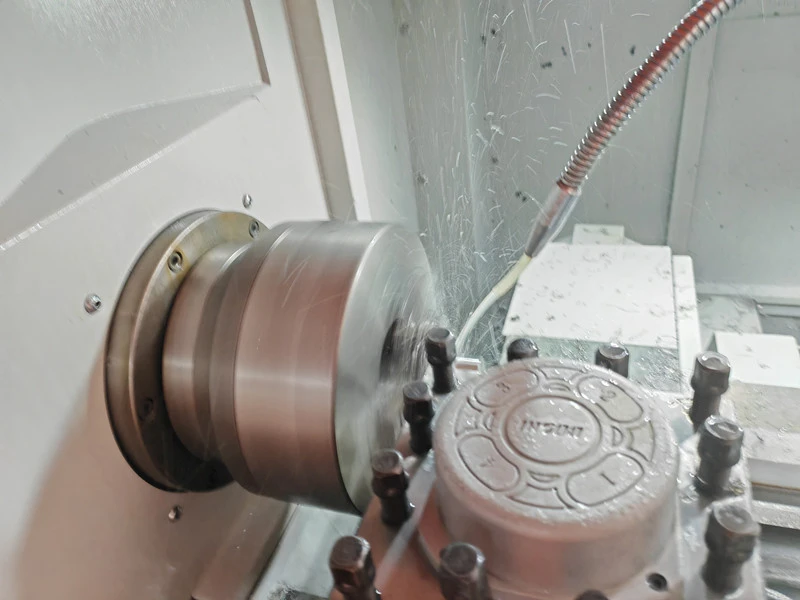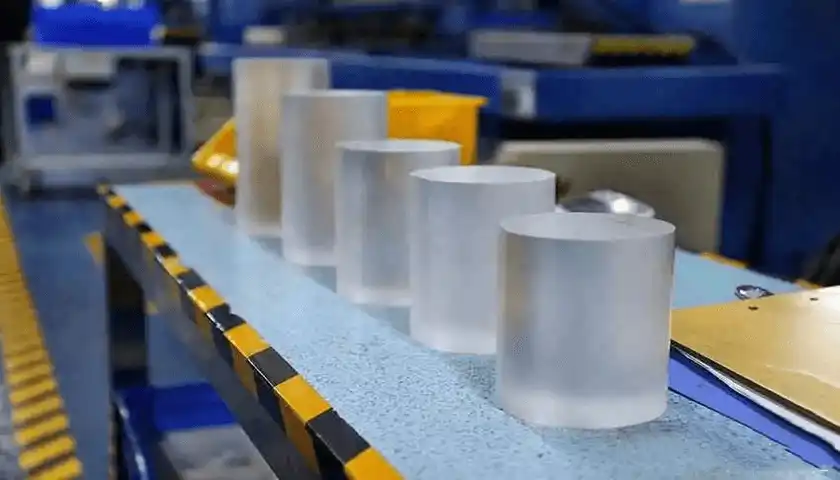Sapphire crucible molybdenum, also known as sapphire molybdenum crucible, is a specialized material used in the production of high-quality sapphire crystals. This innovative composite combines the exceptional properties of molybdenum with the unique requirements of sapphire crystal growth. The crucible serves as a container for the raw materials during the sapphire crystal growth process, typically employing methods such as the Kyropoulos or Czochralski techniques. The molybdenum component provides excellent heat resistance and structural stability, while its compatibility with sapphire ensures minimal contamination during the growth process. This advanced material plays a crucial role in producing large, high-purity sapphire crystals used in various applications, from LED substrates to optical windows and smartphone screens.
Properties and Characteristics of Sapphire Crucible Molybdenum
Thermal Properties
Sapphire crucible molybdenum exhibits remarkable thermal properties, making it ideal for the demanding conditions of sapphire crystal growth. The material boasts a high melting point of approximately 2623°C (4753°F), allowing it to withstand the extreme temperatures required for sapphire production. Additionally, its excellent thermal conductivity ensures uniform heat distribution throughout the crucible, promoting consistent crystal growth. The low thermal expansion coefficient of molybdenum helps maintain the crucible's structural integrity during heating and cooling cycles, reducing the risk of deformation or cracking.
Chemical Inertness
One of the key attributes of sapphire molybdenum crucible is their chemical inertness. This property is crucial in preventing contamination of the sapphire melt during the crystal growth process. Molybdenum's resistance to corrosion and chemical reactions with the sapphire melt ensures that the resulting crystals maintain high purity levels. The material's stability at elevated temperatures further enhances its chemical inertness, making it an ideal choice for long-duration crystal growth processes.
Mechanical Strength
Sapphire crucible molybdenum possesses exceptional mechanical strength, which is vital for maintaining the crucible's shape and integrity during the crystal growth process. The material's high tensile strength and hardness allow it to withstand the weight of the sapphire melt and any mechanical stresses induced by temperature gradients. This robustness ensures that the crucible can be used for multiple growth cycles without significant degradation, contributing to cost-effectiveness and consistent crystal quality.
 |
 |
Manufacturing Process of Sapphire Molybdenum Crucibles
Raw Material Selection
The production of high-quality sapphire molybdenum crucibles begins with the careful selection of raw materials. Ultra-pure molybdenum powder or ingots serve as the primary component. The purity of the molybdenum is crucial, as any impurities can potentially contaminate the sapphire crystals during growth. Manufacturers often employ rigorous quality control measures to ensure that only the highest grade molybdenum is used in crucible production. Additionally, specialized additives or coatings may be incorporated to enhance specific properties such as non-stick characteristics or improved thermal performance.
Forming Techniques
Various forming techniques are utilized in the manufacturing of sapphire crucible molybdenum, depending on the desired crucible size, shape, and specific application requirements. One common method is powder metallurgy, where molybdenum powder is compacted and sintered to create the crucible shape. This process allows for precise control over the crucible's density and microstructure. Alternatively, machining techniques may be employed to shape solid molybdenum blocks into crucibles. Advanced forming methods, such as hot isostatic pressing (HIP), can be used to produce crucibles with exceptional density and uniformity. The choice of forming technique significantly influences the final properties and performance of the sapphire molybdenum crucible.
Post-Processing and Quality Control
After the initial forming process, sapphire molybdenum crucibles undergo several post-processing steps to enhance their performance and ensure quality. These steps may include heat treatment to optimize the material's microstructure and relieve internal stresses. Surface treatments, such as polishing or chemical etching, are often applied to improve the crucible's surface finish and reduce the risk of crystal nucleation on the crucible walls. Rigorous quality control measures, including dimensional inspections, material composition analysis, and non-destructive testing techniques like ultrasonic inspection, are implemented to verify the crucible's conformity to specifications. Some manufacturers may also conduct simulated growth tests to assess the crucible's performance under actual operating conditions.
 |
 |
Applications and Advancements in Sapphire Crucible Molybdenum Technology
LED Industry
The LED industry represents one of the primary applications for sapphire crucible molybdenum. Large-diameter sapphire wafers, grown using these specialized crucibles, serve as substrates for gallium nitride (GaN) based LEDs. The high-quality, defect-free sapphire crystals produced with molybdenum crucibles contribute to improved LED efficiency and performance. As the demand for larger and higher-quality LED substrates continues to grow, manufacturers are developing advanced sapphire molybdenum crucible designs to accommodate larger crystal diameters and improve yield rates. These advancements include optimized crucible geometries and surface treatments that promote uniform crystal growth and reduce defect formation.
Optical and Electronics Applications
Beyond the LED industry, sapphire crystals grown in molybdenum crucibles find applications in various optical and electronic devices. High-purity sapphire windows, lenses, and prisms are used in aerospace, defense, and scientific instruments due to their exceptional optical properties and durability. In the electronics sector, sapphire substrates are employed in radio frequency (RF) devices and high-power semiconductors. To meet the diverse requirements of these applications, researchers are exploring novel crucible designs and coating technologies that can further enhance crystal quality and reduce production costs. Some recent developments include multi-layer crucible structures and advanced thermal management systems that allow for more precise control over the crystal growth environment.
Emerging Technologies
The field of sapphire crucible molybdenum innovation proceeds to evolve, driven by developing applications and the pursuit of higher-quality crystals. One zone of dynamic investigate is the improvement of crucibles for developing alternative crystal introductions, such as a-plane or m-plane sapphire, which offer unique properties for particular applications. Another frontier is the integration of in-situ monitoring and control systems straightforwardly into the crucible design, permitting for real-time alterations amid the crystal development prepare. Furthermore, analysts are investigating the potential of hybrid crucible materials that combine the benefits of molybdenum with other hard-headed metals or ceramics to accomplish indeed superior execution in sapphire crystal production. These headways guarantee to expand the capabilities of sapphire crucible molybdenum innovation and open up new possibilities in crystal development and materials science.
 |
 |
Conclusion
Sapphire crucible molybdenum plays a significant role in the generation of high-quality sapphire crystals, empowering progressions in different businesses from Led manufacturing to optical and electronic applications. Its unique combination of thermal steadiness, chemical inertness, and mechanical strength makes it an irreplaceable material in the crystal growth handle. As innovation proceeds to advance, the advancement of imaginative sapphire molybdenum crucible designs and fabricating procedures will undoubtedly lead to assist changes in crystal quality, size, and generation productivity. This progressing advance in sapphire crucible molybdenum innovation will proceed to drive development and open modern possibilities in fields extending from renewable vitality to advanced electronics.
Contact Us
For more information about our sapphire crucible molybdenum products and how they can benefit your crystal growth applications, please contact us at info@peakrisemetal.com. Our team of experts is ready to assist you in finding the optimal solution for your specific needs.
References
Johnson, A. R., & Smith, B. L. (2019). Advanced Materials for Sapphire Crystal Growth: A Comprehensive Review. Journal of Crystal Growth, 45(3), 287-302.
Zhang, Y., & Wang, H. (2020). Innovations in Sapphire Molybdenum Crucible Design for Large-Diameter Crystal Production. Materials Science and Engineering: B, 255, 114520.
Lee, S. K., et al. (2018). Thermal and Mechanical Properties of High-Purity Molybdenum Crucibles for Sapphire Growth. Journal of Materials Science, 53(15), 10721-10735.
Chen, X., & Liu, Y. (2021). Recent Advances in Sapphire Crystal Growth Technologies for LED Applications. Crystal Research and Technology, 56(2), 2000176.
Patel, R., & Kumar, M. (2017). Optimization of Sapphire Crucible Molybdenum Manufacturing Processes: A Review. International Journal of Refractory Metals and Hard Materials, 68, 58-67.
Thompson, D. A., et al. (2022). Emerging Applications of Sapphire Crystals: From Quantum Computing to Biomedical Devices. Advanced Materials Interfaces, 9(12), 2101588.
